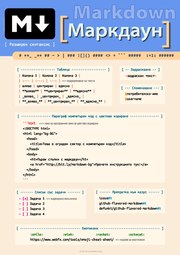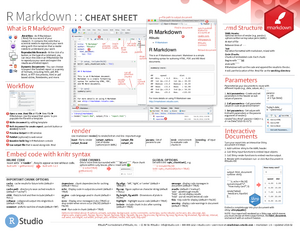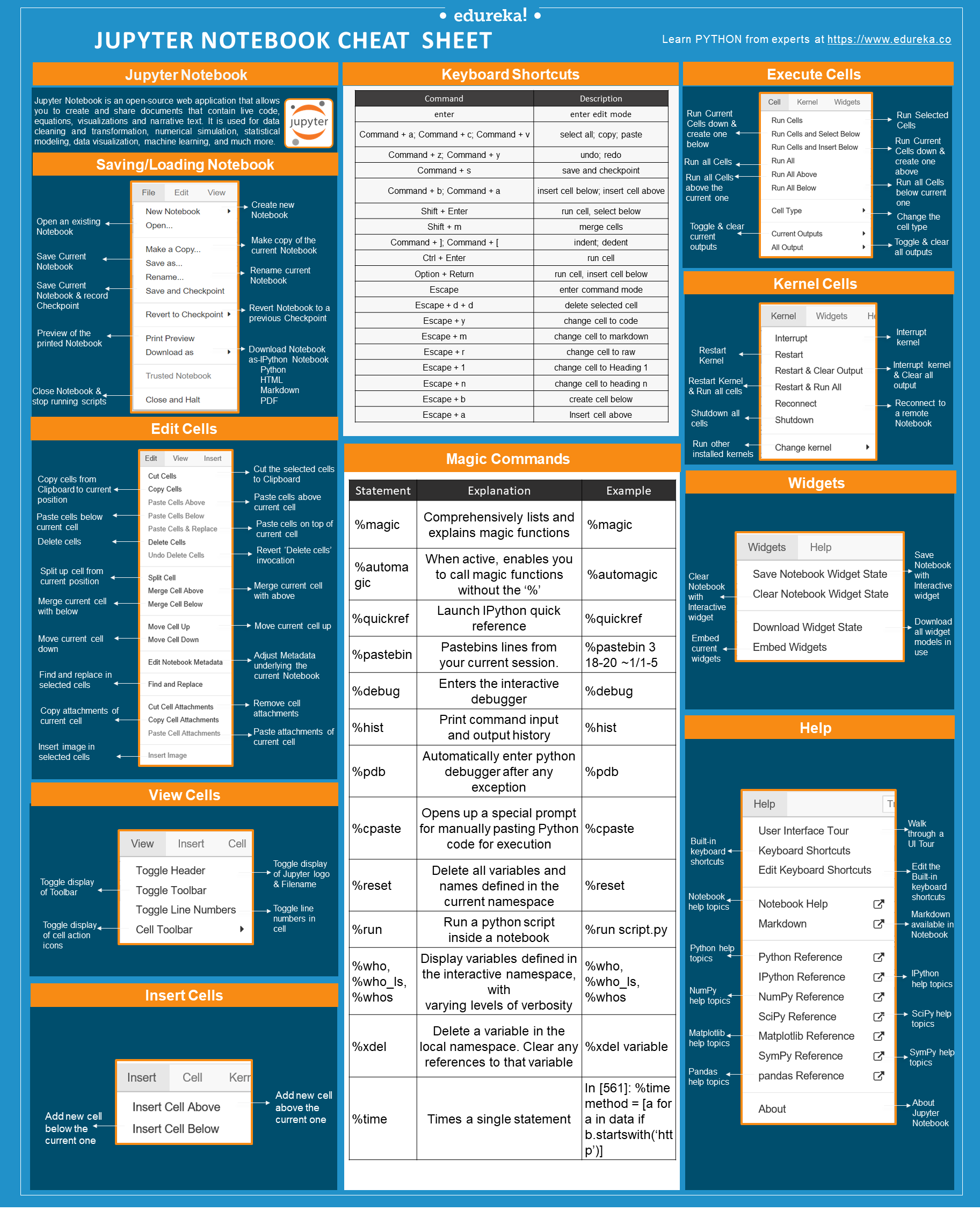고정 헤더 영역
상세 컨텐츠
본문

Markdown is a lightweight markup language, like Creole, JsonML, or Texy!. The lightweight markup languages have a simple, intuitive syntax making them useful for various text editors and wikis.
Markdown was created by John Gruber and Aaron Swartz in 2004. It is widely used for annotating readme files and curating rich-text messages. Markdown is very useful for creating rich-text formatting using a normal, plain text editor.
In this post, we are going to take a look at some of the most useful and frequently used features of this language. This Markdown cheat sheet is going to come in handy for anybody dabbling in it.
The Markdown Cheat Sheet Note: Nearly all flavors of Markdown support the basic elements, but the extended elements are only supported by more advanced forms of Markdown, including CommonMark and GitHub Flavored Markdown. What Are Markdown Flavors? The original Markdown specification came about in 2004.
Markdown Cheat Sheet Github
One thing to note here is that some of the features listed here are not fully supported by Markdown and needs additional support from the editor. But any new editor should do a good job.
Markdown Cheat-sheet. They are written using the markdown. I will be sharing the syntax used in writing a markdown file, but first things first. Markdown cheat sheet You can enrich your comments by using Markdown syntax. Code and formulas can be formatted with PaperHive flavored Markdown (inspired by GitHub ). A cheat sheet for understanding and writing in Markdown and YAML.
Here’s the list of what we cover in this article:
1. Heading
You can create a heading by using an adequate number of hashes (‘#’). You can control the size of the heading by reducing or increasing the number of hashes.
### Big Header
## Bigger Header
# Biggest Header
Markdown Cheat Sheet
2. Bold
The bold effect can be achieved using either the double star (‘**’) or the double underscore (‘__’). You need to wrap the text in any one of the mentioned symbols.
**Bold text created using the double star.**
__Bold text created using the double underscore.__
3. Italics
Italicized text can be created by using either the single star (‘*’) or the single underscore (‘_’). Just like the bold, you need to wrap the text in any one of these characters.

*Italicised text created using the single star.*
_Italicised text created using the single underscore._
Note: You can create the bold and italics effects together also (in case you want a ‘bold italicized’ piece of text). Be sure to close them properly as it can get pretty messy.
4. Blockquote
Quotes are very useful for writing messages or emails. To create a quoted text, you use the forward angle bracket (‘>’). There is a useful feature that some editors support. In case you have a very long passage to quote, you can conveniently place each sentence in a new line starting with a forward angle bracket.
You could shove everything in a single looooooooong line as well, but that’s simply less useful. This makes the source file much cleaner and readable.
> This is the first line.
> This is the second line. They are going to be part of the same quote. Cool!
> This is a very, very, very long line. This is going to look the same as before, but it’s much better to break this line into multiple parts if possible.
5. Strikethrough
Just like bold or italics, you need to wrap the text in the double tilde (‘~~’).
~~To create the strikethrough effect, use a double tilde.~~
6. Horizontal Rule
There are some ambiguities as to how a horizontal rule could be created. The original Markdown required the use of a triple hyphen (—) for creating a horizontal rule. But many editors these days support some other syntaxes as well such as the triple asterisk (***) and triple underscore (___).
This text is before the horizontal rule.
***
This text is after the horizontal rule.
7. Code
Often you would need to include a piece of code in your text. Markdown lets you include code very easily. In fact, you can include the code using two different methods.
The first way is to simply wrap the code inside single backticks (‘`’). This is the preferred way if you want an inline code i.e. any text in the same line before and after the code would be rendered in the same line.
This text is before the code. `This is a piece of code surrounded by backticks.` This text is after the code.
The second method is to use what is popularly known as ‘fenced code blocks’. A piece of code surrounded by triple backticks (‘“`’) would be rendered separately from the text preceding and following it.
“`
This is a piece of code surrounded by triple backticks.
“`
Note: While rendering codes is an inherent feature of Markdown, code highlighting is not. That being said, many modern editor support code highlighting anyway. You need to mention the language that you are using immediately after the opening triple backticks.

8. List
Lists are useful for creating numbered collections. There is, in fact, no special syntax for creating one. You simply write to them as you would have normally written, and the Markdown editor would take care of the rest.
Printable Markdown Cheat Sheet
- The first line.
- The second line.
- The third line.
9. Unordered List
Unordered lists are different from the ordered lists in that they don’t include the number, instead use a bullet symbol. The items can be specified using a hyphen (‘-‘), plus (‘+’), or asterisk (‘*’).

– The first item.
+ The second item.
* The third item.
10. Table
Markdown inherently does not support tables, although most of the modern Markdown editors support them. The columns are denoted by pipes (‘|’) while hyphens (‘-‘) are used to separate the heading and the rest of the rows.
| Product | Quantity | Price |
| ——– | ——— | —– |
| Milk | 1 liter | $1 |
| Butter | 0.5 kg | $3 |
| Tuna | 1 kg | $30 |
11. Links
There are many different ways to include an anchor or hyperlink in the document. You need to use the square brackets (‘[]’) for specifying the text while parentheses (‘()’) is used to specify the webpage (plus the optional description).
[This is a link without description.](https://www.google.com)
[This is a link with description.](https://www.google.com “Google knows everything!”)
Markdown Cheat Sheet Math
12. Images
Including an image in your document is somewhat similar to including a link. Here you need to specify an alternate text inside the square brackets (‘[]’) while the link to the image is specified inside the parentheses (‘()’). Just like links, you can also specify an optional description.

13. YouTube Videos
Including videos is not very straightforward, and it is mostly up to the editors (rather than Markdown). Following is a way to attach a video, although it cannot be played directly (it simply redirects the user to where the video is located).
[](https://youtu.be/6A5EpqqDOdk)
About the Author
 ByteScout Team of WritersByteScout has a team of professional writers proficient in different technical topics. We select the best writers to cover interesting and trending topics for our readers. We love developers and we hope our articles help you learn about programming and programmers.
ByteScout Team of WritersByteScout has a team of professional writers proficient in different technical topics. We select the best writers to cover interesting and trending topics for our readers. We love developers and we hope our articles help you learn about programming and programmers.We've been using Discord at Supernotes since the beginning, it even made our list of the Best Productivity Tools for Startups. Using Markdown in messages is great fun, but if you're new to it, it can be confusing. So here's a quick cheatsheet for you below:
R Markdown Cheat Sheet Pdf
The above cheat-sheet is actually an embedded notecard, written on Supernotes. You can open it in a new window by clicking the title – there you will find a dark mode switch if you are up late. Want to make one for yourself? Try Supernotes now, it's free. And the bonus is that we have an even wider range of Markdown support from highlights to references!
Bonus Markdown Tip – Links
Unfortunately Discord doesn't support Markdown links, but it is the most common point of confusion with Markdown. How do you remember the correct order for square brackets / parathenses to create a link like so:
Never get it wrong again, with this simple method:
- Square brackets
[ ]are associated with straight edgedTEXT - Round parentheses
( )are associated with a roundURL [TEXT]is before(URL)in the dictionary so[TEXT](URL)
Also remember to append https:// to the URL otherwise most Markdown editors will treat this as an internal link.
Markdown Cheatsheet Pdf
If you found this useful give us a buzz over on Twitter, @supernotesapp, we'd love to hear from you!
### Styling
*italics* – italics**bold** – bold__underline__ – underline||spoiler|| – !!spoiler!!~~strikethrough~~ – strikethrough
Code
You can create inline code by wrapping text with a single backtick `, or multi line code with three. Remember to [shift] + [enter] to create a new line in the Discord chat box. Make use of syntax highlighting and append the three first backticks, with the code language:
Blockquotes
You can create single and multiline blockquotes, similar to code blocks, using > or >>> followed by a space, so...
becomes...
Supernotes is a fast note-taking tool






댓글 영역